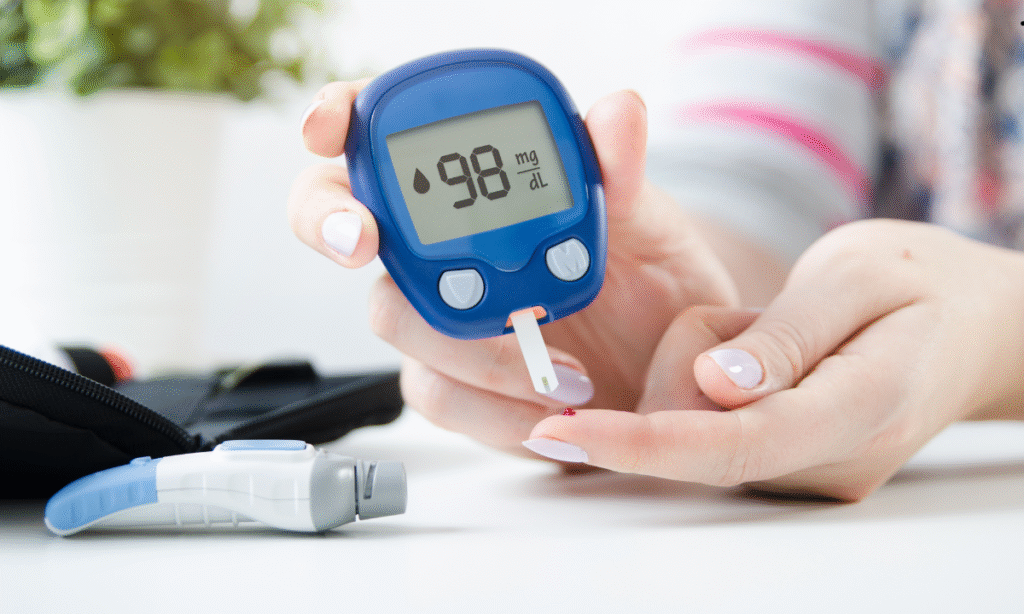Key Highlights
- 44% of people with global diabetes cases remain undiagnosed, with young adults under 35 showing only 20% awareness rates
- Global diabetes cases have surged from 7% in 1990 to 14% in 2022, affecting 537 million adults by 2023
- Only 40% of diagnosed global diabetes cases achieve optimal blood sugar control despite available treatments
Opening Context: The Silent Epidemic Reshaping Global Healthcare
A groundbreaking study published in The Lancet Diabetes & Endocrinology has revealed an alarming healthcare gap: nearly half of global diabetes cases worldwide remain unaware of their condition. This research, analyzing data from 204 countries and territories spanning 23 years (2000-2023), exposes a silent epidemic that threatens to overwhelm healthcare systems globally. The study demonstrates that while global diabetes cases continue climbing from 7% in 1990 to 14% in 2022, diagnostic capabilities lag dangerously behind, particularly in younger populations and low-income regions. With 537 million adults currently living with these conditions and projections suggesting this figure could reach 783 million by 2045, the undiagnosed crisis represents one of the most pressing public health challenges of our time.

Staggering Scale of Undiagnosed Cases Across Age Demographics
The study’s most concerning revelation centers on the vast number of undiagnosed global diabetes cases affecting different age groups. According to the research led by Lauryn Stafford from the Institute for Health Metrics and Evaluation, only 56% of people with these conditions globally are aware of their diagnosis, meaning approximately 240 million individuals live without receiving necessary medical care.
Young adults face the most severe diagnostic challenges, with merely 20% of individuals under 35 years receiving proper diagnosis. This demographic disparity stems from limited screening recommendations for younger populations, as major organizations like the American Diabetes Association typically suggest annual routine screenings only for adults 35 and older. The prolonged asymptomatic nature allows elevated glucose levels to persist for years before complications force medical attention.
Geographic variations further complicate the undiagnosed landscape. Higher-income countries demonstrate superior diagnostic rates compared to low- and middle-income countries, which house nearly 80% of all global diabetes cases. Africa exhibits the highest proportion of undiagnosed conditions at 53.6%, despite having the lowest prevalence estimate of 4.5% among International Diabetes Foundation regions.
Recent CDC data from August 2021 through August 2023 shows that 15.8% of US adults have these conditions, with 11.3% receiving diagnosis and 4.5% remaining undiagnosed. This represents a significant improvement over global averages but still indicates substantial room for enhancement in detection protocols.

Key global and US diabetes statistics showing prevalence, undiagnosed rates, treatment outcomes, and future projections
Escalating Global Health Impact and Economic Burden
The worldwide epidemic continues expanding at unprecedented rates, with global diabetes cases prevalence projected to reach 643 million adults (11.3%) by 2030 and 783 million adults (12.2%) by 2045. This explosive growth pattern reflects demographic shifts, urbanization trends, and lifestyle changes affecting populations worldwide.
Economic implications prove equally staggering. The International Diabetes Foundation estimated global healthcare expenses reached $966 billion in 2021, with projections indicating costs could exceed $1,054 billion by 2045. These figures encompass direct medical expenses and indirect costs associated with productivity losses, disability, and premature mortality.
The burden disproportionately affects developing regions. Low- and middle-income countries experience increases of 150% in emerging economies, yet these nations dedicate only 12.6 billion USD to related expenses, representing merely 1.3% of total global expenditure despite hosting 4.5% of the world’s population with these conditions.

Complications impose additional healthcare system strain. Recent data indicates over 7.8 million hospitalizations with these conditions as a listed diagnosis occurred in 2020 alone, including 1.7 million for major cardiovascular disease and 160,000 for lower-extremity amputations. These conditions ranked as the fourth leading cause of disability-adjusted life-years in the United States during 2021, with a 41% increase from 2011 to 2021.
Treatment Accessibility Crisis and Suboptimal Outcomes
Despite advances in medications including insulin, Metformin, and newer GLP-1 therapies, treatment coverage remains inadequate globally. Research examining 55 low- and middle-income countries found that fewer than one in ten people with global diabetes cases receive comprehensive guideline-based treatment covering all recommended interventions.
Treatment coverage statistics reveal significant gaps across multiple therapeutic areas. Glucose-lowering medication coverage reaches only 50.5% among eligible patients, while antihypertensive medication coverage stands at 41.3%, and cholesterol-lowering medication coverage drops to merely 6.3%. Non-pharmacological interventions show similarly concerning patterns, with diet counseling available to 32.2% of patients, exercise counseling to 28.2%, and weight-loss counseling to 31.5%.
The study’s finding that only 40% of people with treated conditions achieve optimal blood sugar control proves particularly troubling given the availability of established therapeutic options. Multiple factors contribute to suboptimal outcomes, including complex comorbidities such as hypertension and chronic kidney disease that complicate treatment protocols. Additionally, healthcare system limitations in low-resource settings prevent adequate medication access and patient monitoring.
Target HbA1c levels for optimal management typically range between 6.5% and 7.0% for most adults, though individualized goals may vary based on patient factors including age, comorbidities, and life expectancy. Countries with higher income levels consistently demonstrate greater treatment coverage rates, while individual factors including female gender, higher age, increased BMI, greater educational attainment, and higher household wealth correlate with improved treatment access.
Prevention Strategies and Early Detection Imperative
Addressing the undiagnosed crisis requires comprehensive prevention and screening strategies targeting high-risk populations. Unlike type 1 conditions, which currently lack prevention methods, type 2 global diabetes cases offer multiple intervention opportunities through lifestyle modifications and dietary changes.
Evidence-based prevention approaches include reducing red and processed meat consumption, adopting Mediterranean dietary patterns, limiting ultraprocessed foods, and incorporating regular physical activity. Research demonstrates that walking briskly for at least 15 minutes daily can significantly decrease risk while providing additional chronic disease protection.

Early detection protocols must expand beyond current age-based screening recommendations. Individuals with family histories or experiencing symptoms including increased thirst, frequent urination, blurry vision, unexpected weight loss, and fatigue should receive immediate glucose screening regardless of age. Healthcare systems need enhanced capacity for population-based screening programs, particularly in underserved communities where undiagnosed rates remain highest.
The asymptomatic nature of early-stage conditions necessitates proactive screening approaches rather than symptom-based detection. Approximately one-third of adults receive diagnosis later than their earliest symptom occurrence, indicating substantial opportunities for earlier intervention. Expanding screening programs to younger demographics and improving accessibility in low-resource settings could dramatically reduce the 44% undiagnosed rate documented in recent research.
Final Perspective: Urgent Action Required for Global Health Security
The revelation that nearly half of global diabetes cases remain undiagnosed represents a critical inflection point for healthcare systems worldwide. With prevalence doubling from 1990 to 2022 and projections indicating continued explosive growth through 2045, the current diagnostic and treatment gaps threaten to create an unprecedented public health catastrophe. The intersection of demographic transitions, urbanization patterns, and lifestyle changes creates perfect conditions for proliferation, particularly in developing nations where healthcare infrastructure struggles to match disease burden. Addressing the undiagnosed crisis demands coordinated international efforts encompassing expanded screening programs, improved treatment accessibility, and comprehensive prevention strategies. The window for preventing this silent epidemic from overwhelming healthcare systems worldwide continues narrowing, making immediate action essential for global health security.
Current projections indicate global diabetes cases could reach 853 million by 2050, with healthcare expenditure potentially exceeding $1 trillion annually, demanding unprecedented investment in early detection systems and population-wide prevention initiatives. The magnitude of this challenge requires transformative policy interventions, technological innovations, and cross-sector collaboration to prevent millions of unnecessary deaths and disabilities associated with late-stage complications from undiagnosed conditions.
Healthcare leaders must embrace the urgent truth that awareness is the first step toward defeating global diabetes cases, transforming today’s knowledge into tomorrow’s cure through sustained commitment to population health initiatives targeting global diabetes cases.


